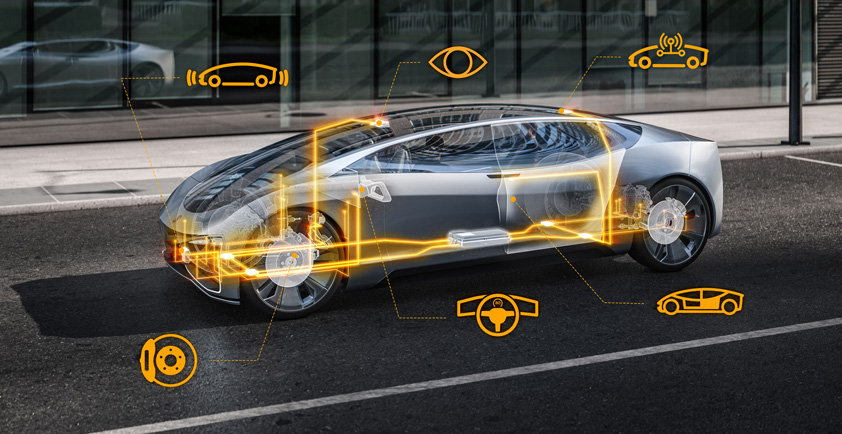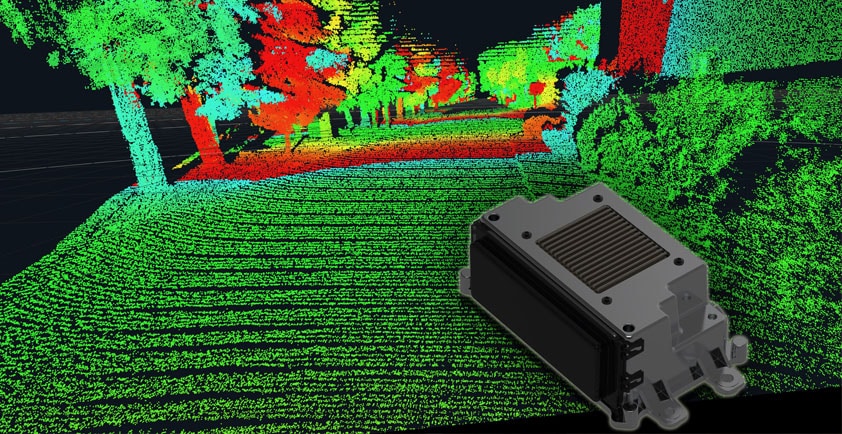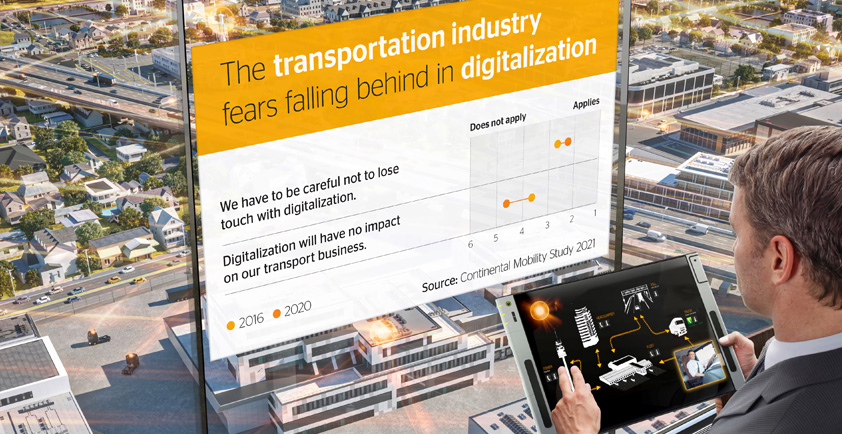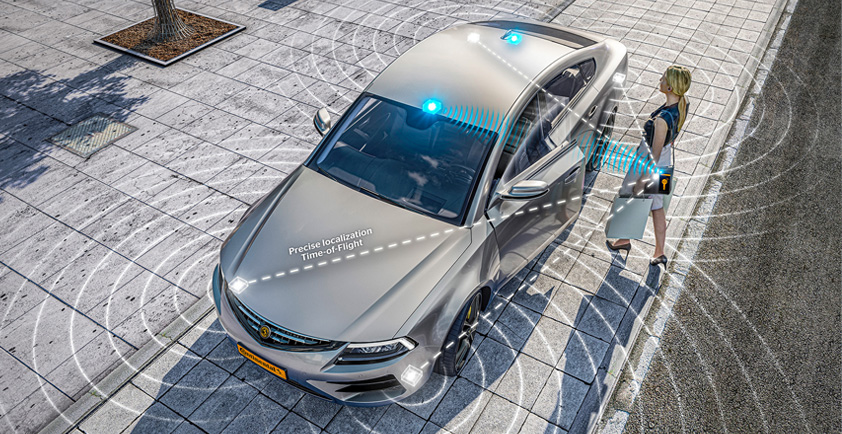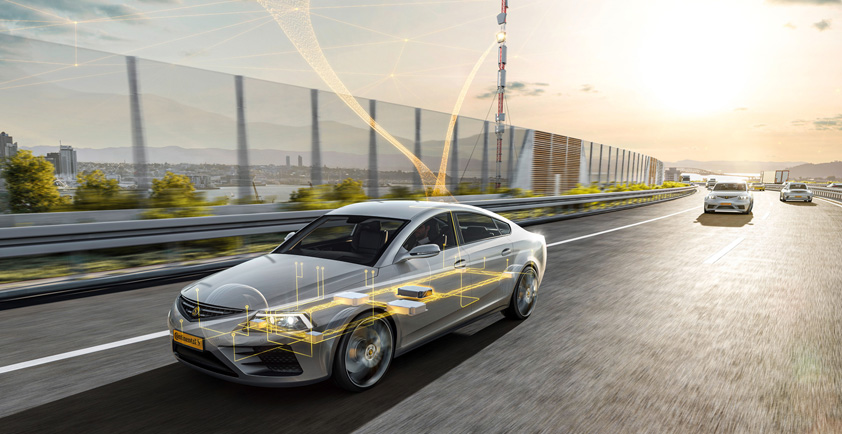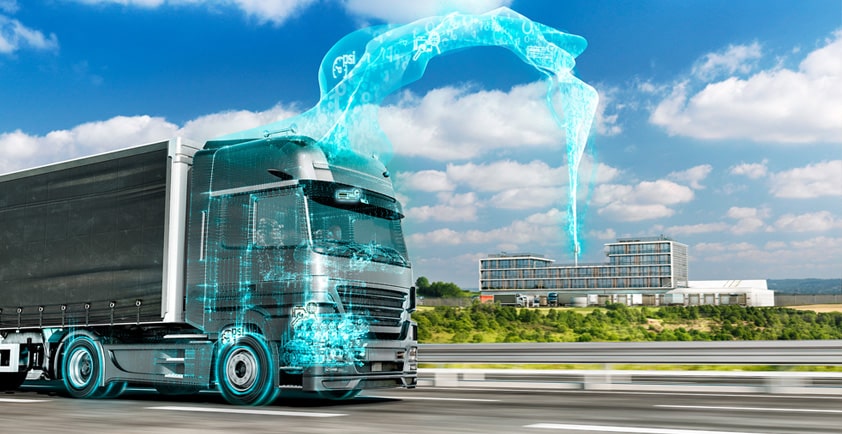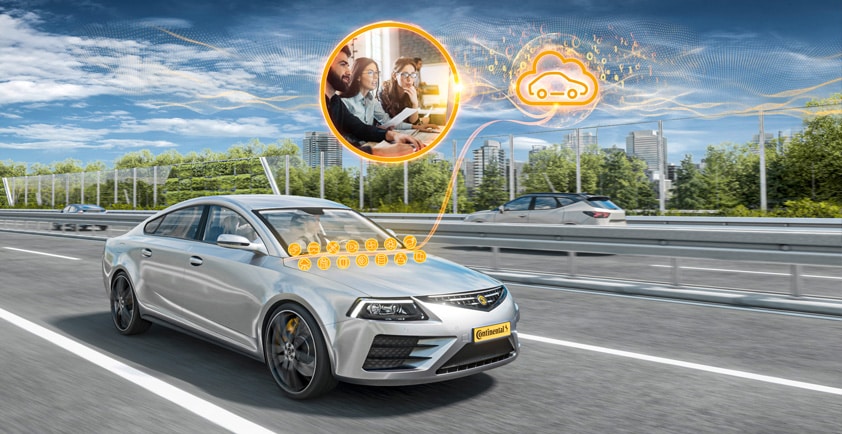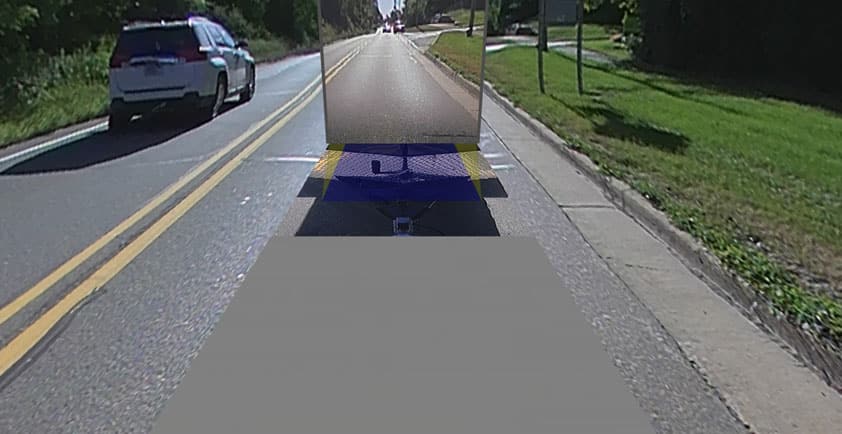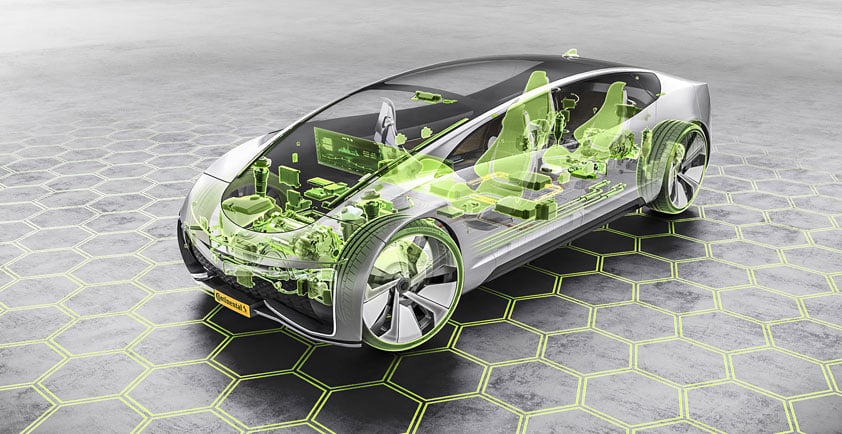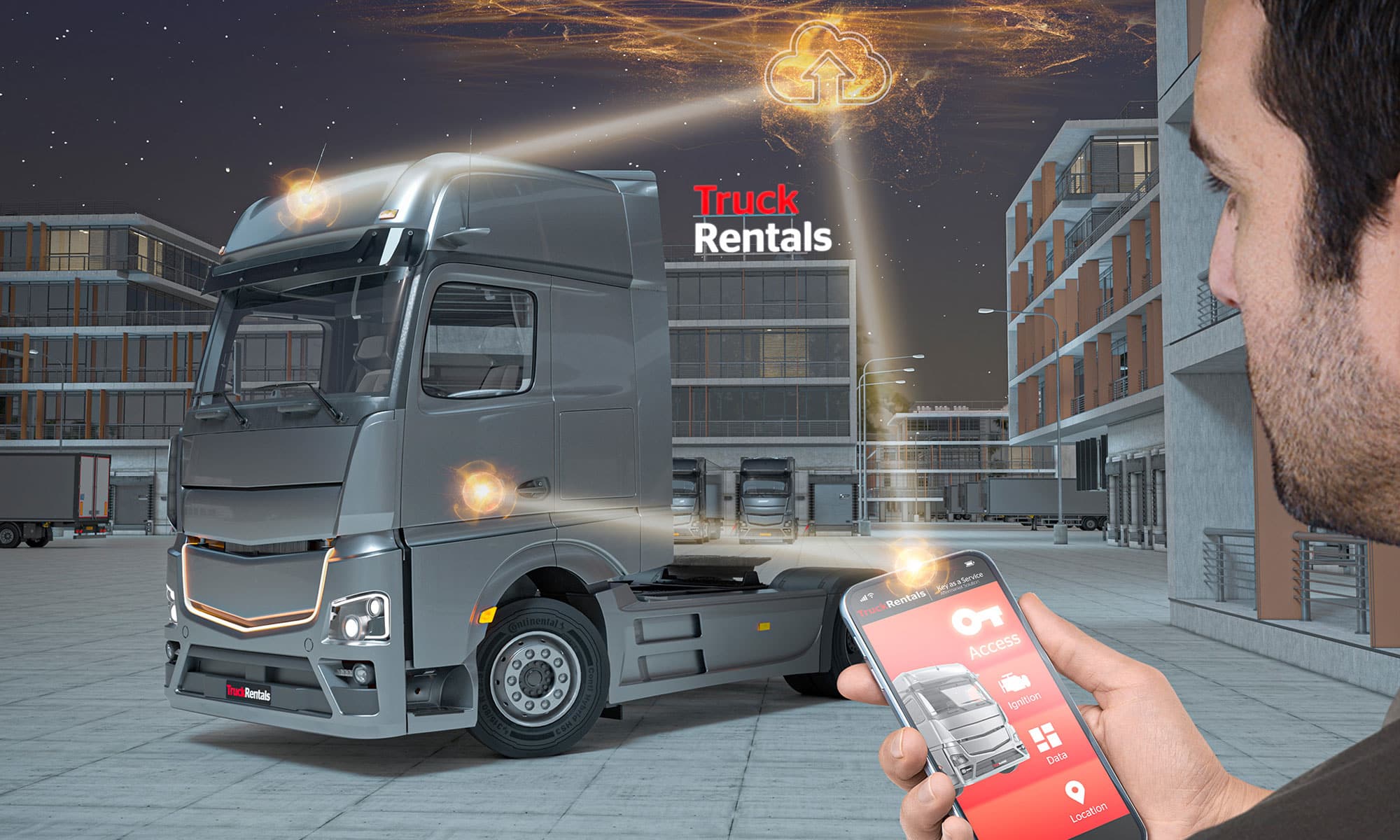
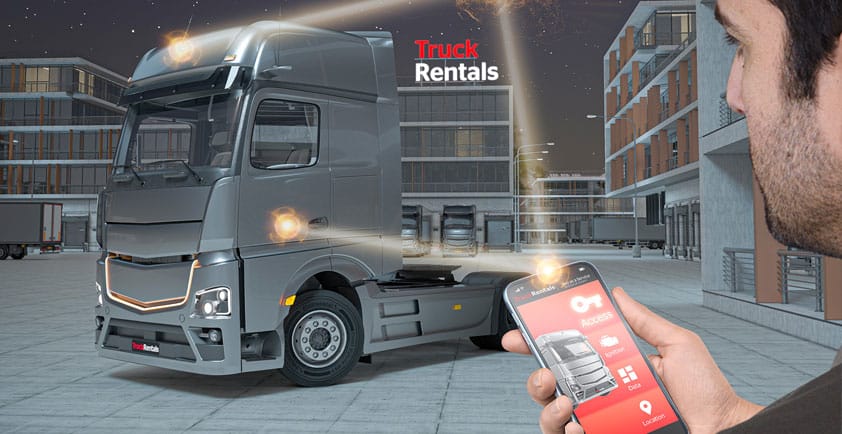
WHEN THE SMARTPHONE TURNS INTO A KEY: CONTINENTAL IS BRINGING ITS KEY AS A SERVICE TO COMMERCIAL VEHICLES
>> Technology company adapts digital technology for cars to commercial vehicles
>> Keyless vehicle access via smartphone app and Bluetooth enables more efficient fleet management
Zaventem/Belgium. Continental is extending its virtual Key as a Service solution from passenger cars to commercial vehicles. The technology company announced this at its virtual press event, Commercial Vehicle Media Days. Key as a Service enables users to open their vehicles and start their engines with a simple command via smartphone or Bluetooth card. “At Continental we see many ways to adapt digital services for passenger cars for use in commercial vehicles,” says Gilles Mabire, Head of the Commercial Vehicles & Services Business Unit, where the company bundles electronic and digital products for commercial vehicles and mobile machinery. “By taking advantage of the technology in our car solutions and tailoring it to the needs of trucks, vans and coaches, we’re bringing products onto the commercial vehicle market that are both innovative and affordable.”
Greater efficiency through hands free vehicle transfer
Physical keys have the disadvantage that they’re not always where the driver needs them. This is often the case with trucks and coaches, which are usually driven by more than one person. The same is true for vehicles that are operated by fleets or car rental services. Continental’s Key-as-a-Service platform makes vehicle handovers much easier. Physical key transfers are unnecessary because vehicles can easily be opened and started with a smartphone app. This offers a number of advantages:
> Driver changes for vehicles en route are more efficient, and there are no waiting times.
> Virtual key handovers are hygienic because physical contacts are minimized.
> Virtual keys can be passed to other users. Mechanics can gain access to the cab and engine without bothering the driver. Maintenance coincides with the driver’s rest period, and the virtual key is transmitted via Key as a Service directly to the mechanic’s smartphone.
> Truck rental companies benefit from secure, smooth handovers that are independent of opening hours.
> Linking the virtual key to the company’s IT systems can streamline vehicle access and usage information
Today roughly 40 percent of all cars in the world are equipped with key solutions from Continental. In 2019, the technology company supplied more than 34,5 million remote keys. In addition, by late 2020, 100,000 virtual key sets are expected to be licensed. This is a proven technology, and Continental is now applying its wealth of experience from the passenger car segment to commercial vehicles of all sizes and classes.
Simple and secure
As soon as a driver is within 40 meters of the right vehicle, he can use a smartphone app to initiate communication with the commercial vehicle’s electronic key system via Bluetooth Low Energy. There are two layers of security. First, the system relies on secure communication between the remote key system and the vehicle’s ECU. Second, the module in the vehicle uses its integrated SIM card to authenticate the smartphone via Continental Cloud. Opening and starting are possible only if the virtual key from the cloud confirms that the smartphone is authorized for that particular vehicle. As an alternative, a Bluetooth card or NFC (Near Field Communication) card can be used.
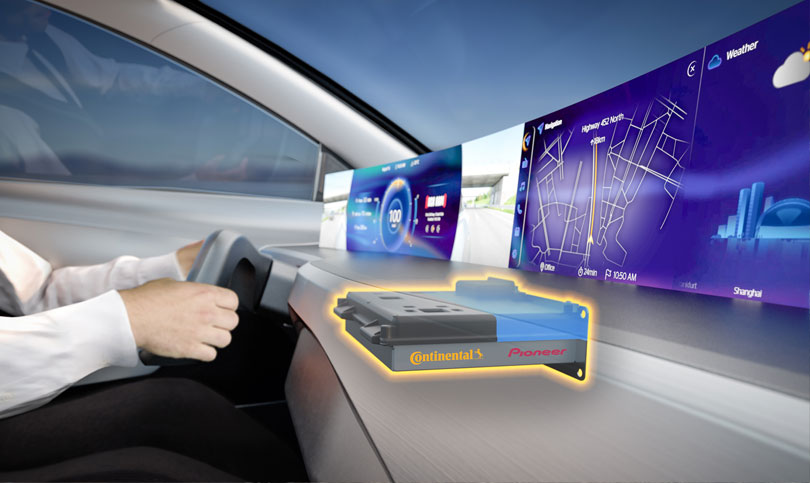

CONTINENTAL AND PIONEER AGREE ON STRATEGIC PARTNERSHIP FOR A NEW USER EXPERIENCE
Babenhausen. The technology company Continental and the Pioneer Corporation have signed a strategic cooperation agreement. Their integrated infotainment solution means both partners create a holistic user experience that is specially aimed at the Asian market. Continental integrates Pioneer’s entire infotainment subdomain into its high-performance computer for vehicle cockpits as part of the agreement. Integration of such extensive software packages into a complex overall solution such as the cockpit high performance computer (HPC) from Continental offers vehicle manufacturers a much greater degree of flexibility regarding the development of cockpit systems. Such flexible solutions are crucial for future developments in order to meet both the trend toward centralized vehicle architecture as well as increasing software complexity along with the rapidly growing range of functions in the cockpit.
This will require increasing strategic collaboration between several specialist partners in the future. Continental and Pioneer clearly demonstrate how flexible and comprehensive such collaboration models can appear in the field of centralized cockpit systems with integration of the entire infotainment domain into a holistic system. The electronics company Pioneer, headquartered in Japan, is one of the specialists in the car entertainment sector and provides this expertise as part of the collaboration. Alongside the Cockpit HPC, Continental will be providing the partnership with its extensive integration expertise.
Decisive Advantage of Flexibility
Up to now, the human-machine interface in the vehicle was essentially made up of two separate areas implemented on two displays: The actual driver information in the instrument cluster and the centerstack display, which is for the driver and front passenger. The infotainment aspect was concentrated on the centerstack display. This architecture is no longer ideal due to the increasing interconnectivity of information, services and functions. Instead, the cross-domain solution of the Cockpit HPC has all displays and operating elements in the vehicle merging into a holistic user interface.
This means that content can be shown regardless of display limits and also be individually arranged by the user. It is therefore ensured, in potentially critical situations, that only the information that is really needed at the respective moment is displayed as a priority. This prevents the driver from receiving too much information or being distracted. On the other hand, the driver is also provided with all the services and apps in automated driving mode that can otherwise only be found on the front passenger’s side. Such improvements in comfort and safety are made possible by an electronic architecture, which separates all different systems and operating systems on a single piece of hardware that can be updated or amended on an ongoing basis. For this to happen, it must be possible to host software from many sources on a single, high-performance computer regardless of hardware. The two partners are using the flexibility of the Continental high-performance platform as part of such collaboration.
“We believe that the Asian market in particular is highly motivated and dynamic in the field of vehicle digitalization, and we believe that we have a combination of strengths and expertise that is ideal for both parties in strategic cooperation,” summarizes Rabe. “The cockpit high-performance computer provides the technical foundation for efficient collaboration, as software containers can be flexibly docked and undocked with this platform.”


SAFETY AS A RETROFIT SOLUTION – CONTINENTAL LAUNCHES TURN ASSIST SYSTEM FOR COMMERCIAL VEHICLES
Hanover. Continental is launching a turn assist system onto the market that can be quickly and easily retrofitted in commercial vehicles. As the sole provider of this safety technology to date, the technology company is relying on an exclusively radar-based system that can detect and classify cyclists and pedestrians.
The latest safety technology now available even for older commercial vehicles
“Increasing the safety of more vulnerable road users is an important social responsibility,” says Gilles Mabire, head of the Commercial Vehicles & Services business unit. And this is true now more than ever, since the number of cyclists in particular is currently on the rise. Due to the coronavirus, more and more people are forgoing local public transport and getting on their bikes instead (source: infas). A turn assist system like the one Continental is now offering for retrofitting significantly increases safety by warning the driver of the commercial vehicle as soon as a pedestrian, cyclist or scooter driver is in the blind spot beside the bus or truck. By 2024, systems like these will gradually become mandatory in all new trucks in the EU. Voluntary retrofitting is a state-subsidized way of filling the equipment gap in trucks that are already on the road.
There are currently more than three million vehicles registered in Germany (source: Statista). This technology can be easily fitted to the truck. The radar sensor system is installed on the rear-view mirror and monitors the area up to four meters to the side of the vehicle and up to 14 meters behind it.
High-tech solutions to protect more vulnerable road users
Continental has extensive know-how and many years of expertise in the field of turn assist systems for trucks and passenger cars. Work has already started on the third generation of the technology. In the future, a combination of radar and camera data working with artificial intelligence will even recognize the gestures of cyclists and pedestrians, helping to protect the most vulnerable road users even more proactively.
